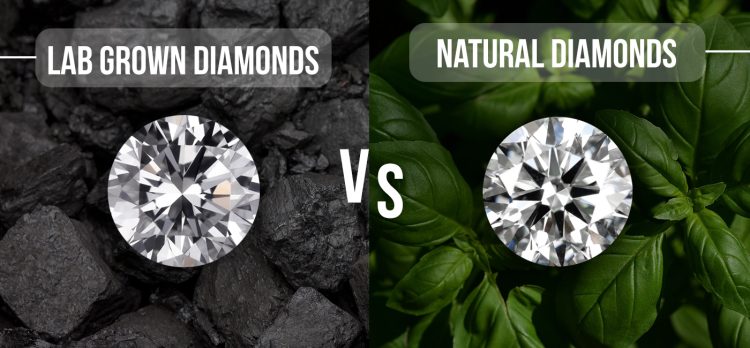Introduction: The Sparkle of Innovation
Diamonds have long been symbols of wealth, luxury, and romance. From engagement rings to red-carpet events, these precious stones have stood as markers of human achievement, timelessness, and desire. Yet, as the world moves toward more sustainable, ethical, and innovative practices, a new contender has emerged in the glittering world of gems: lab-grown diamonds.
Once considered a niche market reserved for technophiles and eco-conscious consumers, lab-grown diamonds are now poised to challenge the dominance of their mined counterparts. In this article, we explore the rise of lab-grown diamonds, the technology behind their creation, their impact on the diamond industry, and whether they truly have what it takes to be the “next big thing” in the world of gemstones.
The Basics: What Are Lab-Grown Diamonds?
At the most fundamental level, lab-grown diamonds are, well, diamonds. They share the same physical, chemical, and optical properties as their mined cousins. This means that they are composed of carbon atoms arranged in a crystal lattice structure, which gives them their iconic sparkle and hardness (a 10 on the Mohs scale). However, what distinguishes lab-grown diamonds from natural diamonds is their origin.
Two Main Methods of Creation
Lab-grown diamonds are created through two main methods:
- High Pressure, High Temperature (HPHT):
- This process mimics the natural conditions deep within the Earth’s mantle. Carbon is subjected to extreme heat and pressure, causing it to crystallize into diamond form.
- HPHT diamonds are often grown in small, round shapes and are typically used for industrial applications, though high-quality gemstones can also be created.
- Chemical Vapor Deposition (CVD):
- In this method, carbon-rich gases are introduced into a vacuum chamber where they are ionized into a plasma state. The carbon atoms then settle onto a substrate, building up layer by layer to form a diamond.
- CVD diamonds tend to be larger and clearer than HPHT diamonds and are commonly used in fine jewelry.
The Science Behind the Sparkle
To the untrained eye, lab-grown diamonds are nearly indistinguishable from mined diamonds. Both types of diamonds share the same chemical composition and crystal structure, which gives them their characteristic brilliance, fire, and scintillation.
![7 Sustainable & Ethical Jewelry Brands in 2022 [Updated List] - Utopia](https://images.utopia.org/rkOUrwUVyctzdRItWywYvjmpgc_YdeanexwwqGyOOn8/rt:fill/w:1152/h:864/g:ce/plain/2021/06/ethical-sustainable-jewelry-sc-instagram-omiwoods-shopsoko-210602-1280x720-1.jpg)
However, there are a few subtle differences that are detectable only with specialized equipment:
- Inclusions and Growth Patterns: Lab-grown diamonds often have unique inclusions or growth patterns that can be detected with a microscope. These are not imperfections in the stone, but rather traces of the process used to create them.
- Diamond “Fingerprint”: Every diamond, whether natural or lab-grown, has its own microscopic “fingerprint” that can be identified by gemologists using advanced technology. This can distinguish a lab-grown diamond from a natural one, but the difference is often minute.
The Advantages of Lab-Grown Diamonds
1. Ethical and Sustainable
One of the strongest selling points of lab-grown diamonds is their environmental and ethical impact. The mining of natural diamonds has long been associated with severe ecological damage, human rights violations, and “blood diamonds”—diamonds that fund conflicts and violence.
Lab-grown diamonds, on the other hand, are produced in controlled environments with minimal environmental disruption. They require no mining, reducing the carbon footprint and eliminating concerns about exploitative labor practices. For consumers increasingly interested in sustainable and ethical products, lab-grown diamonds provide a compelling alternative.
2. Cost-Effective
Lab-grown diamonds are typically much more affordable than their mined counterparts. The reason for this is simple: they don’t require the same massive labor or infrastructure costs associated with diamond mining. The price of a lab-grown diamond can be up to 30%–50% lower than a comparable natural diamond. This makes them an attractive option for buyers who want the allure and beauty of diamonds without the hefty price tag.
3. Customization
Because lab-grown diamonds are created in a controlled environment, they can be tailored to meet specific design preferences. Whether it’s size, shape, or color, the precision of lab-grown diamond production allows for greater customization. This has led to a boom in personalized diamond jewelry, from engagement rings to custom necklaces, that cater to the tastes of individual consumers.
The Diamond Industry Disruption
Lab-grown diamonds have the potential to disrupt the traditional diamond industry in a significant way. But how exactly does this impact the global diamond market, and what does it mean for consumers, jewelers, and investors?
The Threat to Traditional Mining
The dominance of natural diamonds has been unchallenged for decades, but lab-grown diamonds are slowly gaining ground. While the market share of lab-grown diamonds is still a fraction of the total diamond industry (estimated at around 5% in 2023), the rapid growth of this sector suggests that their popularity is on the rise.
One of the biggest threats to traditional diamond mining is the cost difference. With lab-grown diamonds being significantly cheaper, consumers are increasingly opting for them, especially in the luxury segment. As production scales, prices are likely to continue to drop, further eroding the market for mined diamonds.
The Impact on Jewelry Retailers
For jewelers, the rise of lab-grown diamonds presents both challenges and opportunities. On one hand, jewelers must adapt to the growing demand for lab-grown options, especially among younger consumers who are more concerned with sustainability and social responsibility. On the other hand, they can capitalize on the increasing interest in customized, affordable, and ethically sourced diamonds.
Some traditional jewelers have even embraced lab-grown diamonds, adding them to their collections as a way to cater to a broader customer base. For instance, brands like Tiffany & Co. and De Beers have introduced lab-grown diamond lines, signaling a shift in industry dynamics.
The Investment Perspective
For investors, lab-grown diamonds present a more volatile market. While they are less expensive and have a lower resale value than mined diamonds, their production process is more predictable. This could lead to more stable pricing in the long run, making them an interesting option for investors looking to diversify their portfolios. However, the long-term outlook remains uncertain as the industry continues to evolve.
Are Lab-Grown Diamonds the Next Big Thing?
The short answer is: yes, but with a few caveats.

The Growing Consumer Demand
Lab-grown diamonds have seen significant growth in consumer interest, especially in regions like the U.S. and Europe. Younger generations, in particular, are embracing them for their affordability, ethical appeal, and environmental benefits. As awareness continues to spread and technology improves, the demand for lab-grown diamonds is likely to increase.
Market Shifts and Mainstream Adoption
For lab-grown diamonds to truly become the “next big thing,” they need to achieve mainstream adoption. While they are already a popular choice among eco-conscious buyers, traditional diamonds still dominate the luxury and high-end markets. However, as more consumers become educated about the benefits of lab-grown diamonds, it’s possible that they could replace mined diamonds as the standard choice in fine jewelry.
The Role of Technology and Innovation
The continued advancement of diamond-growing technology will play a pivotal role in determining whether lab-grown diamonds can sustain their momentum. As the processes become more efficient and scalable, lab-grown diamonds could become more accessible to a wider range of consumers.
The Challenges Ahead
Despite their many advantages, lab-grown diamonds face some significant challenges:
- Consumer Perception: Many people still associate natural diamonds with luxury, exclusivity, and tradition. Lab-grown diamonds, though identical in appearance, lack the “natural” narrative that has been so ingrained in the diamond industry.
- Market Saturation: As more companies enter the lab-grown diamond market, competition could drive prices down, potentially making it harder for producers to maintain profitability.
- Regulatory Hurdles: Governments and regulatory bodies are still catching up with the rise of lab-grown diamonds. Clear labeling laws, certification processes, and consumer protection regulations will be crucial in ensuring that lab-grown diamonds are marketed ethically and transparently.
Conclusion: A Bright Future, But Uncertain
Lab-grown diamonds are undeniably gaining momentum as an affordable, ethical, and sustainable alternative to mined diamonds. Their growth is fueled by advances in technology, rising consumer awareness, and the changing demands of a more socially conscious world. However, while lab-grown diamonds may be on the cusp of becoming the next big thing, there are still several hurdles to overcome—particularly in terms of consumer perception and market dynamics.
What is clear, though, is that the diamond industry is undergoing a significant transformation, and lab-grown diamonds are poised to play a leading role in this evolution. Whether they will eventually surpass mined diamonds in terms of popularity remains to be seen, but their place in the future of the jewelry market is certainly secured.

















































